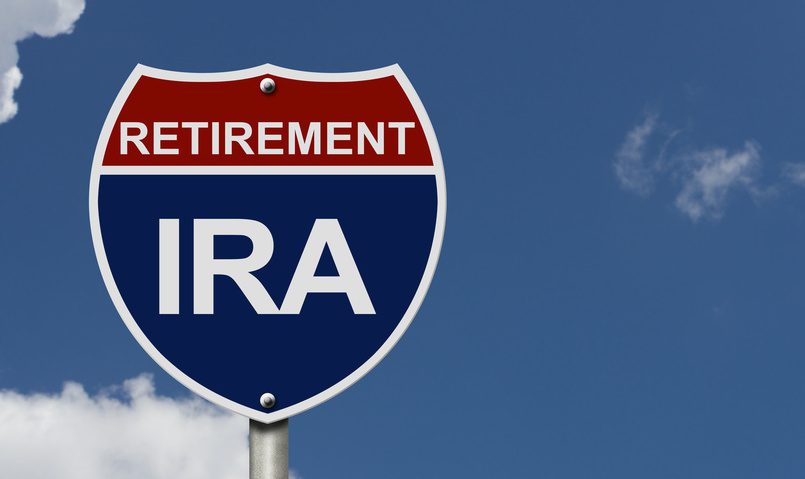Difference between Traditional and Roth IRA

There are many types of IRAs. But two of the most common are the traditional IRA and the Roth IRA. The type of account you select can have a significant impact on your long-term household savings.
The biggest difference between a traditional IRA and Roth IRA is their classifications in the IRS tax code. A traditional IRA holds the benefit of tax deferral, which means that money going into it has pre-tax status. On the other hand, since a Roth IRA is funded with after-tax dollars, it gives the benefit of potentially tax-free distributions. On top of these differences, both types of accounts have different rules for required minimum distributions.
Because of this difference and others, it’s important to understand the fundamentals behind these two plans. This brief discussion will help you understand their distinctions, their eligibility criteria, and other important factors. Let’s get into it.
Other Important Differences Between Traditional and Roth IRAs
Apart from distinctions in the tax code, traditional and Roth IRAs have some other differences. Here’s a quick overview of them:
Income Limitations
People can open a traditional IRA and make contributions toward it if they received taxable compensation. Generally, compensation refers to wages, salaries, commissions, tips, professional fees, and other forms of earned income. Further discussion of what the IRS defines as “compensation” can be found here.
Whether these contributions are tax-deductible will depend on the amount of income you earned and whether you, or your spouse, are covered by a workplace retirement plan.
Should your income exceed certain amounts, and one of you does have a retirement plan at work, your contributions may be limited. On the other hand, if neither of you is covered by a workplace retirement plan, you are permitted full deductions. You can learn more about the income limits of traditional IRAs here.
On the other hand, Roth IRAs come with no age restrictions. However, there are certain restrictions in terms of income.
If you are a single tax filer interested in contributing to a Roth IRA, your modified adjusted gross earnings in 2020 must be less than $139,000. In case of married couples, a modified AGI of less than $206,000 will qualify them for Roth contributions.
However, if a single person or a married couple wanted to benefit from full Roth deductions, that also comes with income limits. In 2020, a single person can only have an AGI of up to $124,000, while married couples filing jointly can only go up to $196,000.
Tax Treatment Advantages
Sure, tax advantages are available with both traditional and Roth IRAs. But the timing of when those advantages apply is important. Traditional IRA contributions are deductible from state and federal income taxes for the year in which the contributions were made. The trade-off is on the backend, when you withdraw money from your account.
Withdrawals are subject to income taxation. That means your withdrawals are considered taxable income, and you will be taxed at the rate of the income tax bracket you fall into that year. State income taxes may also apply.
Conversely, Roth IRAs don’t come with tax breaks. Contributions to them don’t reduce your gross income, and therefore your tax bill, in the year you make contributions. However, in general, your withdrawals are tax-free. Therefore, a traditional IRA helps you enjoy tax breaks while putting money into the plan. On the other hand, Roth IRAs helps you mitigate taxes when taking it out.
2025 Income Limits for Deductibility and Contributions
Traditional IRA:
Anyone with earned income can contribute, but deductibility depends on your income and whether you or your spouse are covered by a workplace retirement plan.
Deduction phase-outs for 2025:
- Single filer with a workplace plan: $77,000–$87,000
- Married filing jointly with contributor covered: $123,000–$143,000
- Married filing jointly (spouse covered): $230,000–$240,000
If you (and your spouse) don’t have a workplace plan, your contributions are fully deductible—no income limits apply.
Roth IRA:
Contributions are not tax-deductible, and eligibility is based on income.
Contribution phase-outs for 2025:
- Single filers: $146,000–$161,000
- Married filing jointly: $230,000–$240,000
Differences in Withdrawal Rules
One of the major differences between a traditional IRA and a Roth IRA lies in the way the savings are withdrawn. When you reach age 72, you must start taking certain minimum sums from a traditional IRA.
These are the required minimum distributions, or another way for Uncle Sam to take his share of retirement money for public revenues. RMDs are based upon life expectancy tables from the IRS.
With Roth IRAs, the account owner has no mandatory requirements to take any withdrawals during their lifetime. Therefore, individuals with sufficient income from other sources can allow their Roth IRAs to enjoy long-term, tax-advantaged growth.
One similarity that traditional and Roth IRAs share is with the age 59.5 rule. Withdrawals from a traditional IRA before 59.5 are called “early withdrawals.”
Apart from income taxes, you would have to pay a 10% penalty on the withdrawn balance. Moreover, this applies to some extent with Roth IRAs.
If a withdrawal is taken from a Roth IRA before 59.5, and it includes earnings, you may have to pay income taxes and a 10% penalty.
However, say you take out money from a Roth IRA before you are 59.5. So long as your withdrawal doesn’t surpass the amount you have contributed over the years, you are in the clear. Income taxes and the 10% penalty wouldn’t be levied.
Once someone reaches 59.5, withdrawals from traditional and Roth IRAs are free of the 10% withdrawal penalty.
However, in order to avoid the incurrence of tax, Roth IRA owners must ensure that their first contribution was made no less than five years before the date of their first withdrawal.
Additional Benefits
While these differences are a few ways traditional and Roth IRAs vary, there are some other distinctions. For example:
Traditional IRA owners below age 59.5 can take up to $10,000 from their accounts, without paying a normal 10% penalty, for certain qualified expenses. These qualifying expenses include a first-time home purchase, higher education, disability, and certain kinds of unreimbursed medical costs.
However, you will pay income tax on the withdrawal balance.
Roth IRA owners are free to withdraw their contribution at any given time without paying any tax or penalty. Roth earnings up to $10,000 can be withdrawn without any penalty before age 59.5 to pay for qualifying first-time home-purchasing expenses.
However, this can be done only after five tax years from the initial contribution.
Also, Roth IRAs can contain virtually any investment, including individual stocks, index funds, and even alternative investments. On the other hand, traditional IRAs are bound by limits on what asset types in which they may be invested.
Potential Tax Implications
As you think over your retirement configuration, it’s important to consider future tax implications. You will have to pay taxes on withdrawals from traditional IRAs.
But converting or opening up a Roth IRA now can be “tax-heavy.” It’s prudent to have honest and frank conversations with a qualified professional about what makes sense for your situation.
With that said, say someone holds both traditional and Roth accounts.
One way to mitigate tax burden with RMDs is using qualified longevity annuity contracts. With a proper configuration, you could stretch out your tax liability to as late as age 85.
For older account owners, immediate annuities may also present a more short-term strategy to alleviate the tax liability posed by RMDs. Ask a knowledgeable financial professional for guidance in whether this might be beneficial for your circumstances.
Final Thoughts
While traditional and Roth IRAs are efficient vehicles for retirement income, they are just a few potential sources. Many retirement investors struggle with the uncertainty of knowing how they will meet all of their costs of living, month to month, and being able to enjoy a comfortable lifestyle.
If you are ready, financial professionals at SafeMoney.com can help you discover strategies to achieve reliable income streams for life. They can also assist you with uncovering other options to achieve your goals.
To get started, use our “Find a Financial Professional” section to connect with someone directly. And if you need a personal referral, call us at 877.476.9723.








